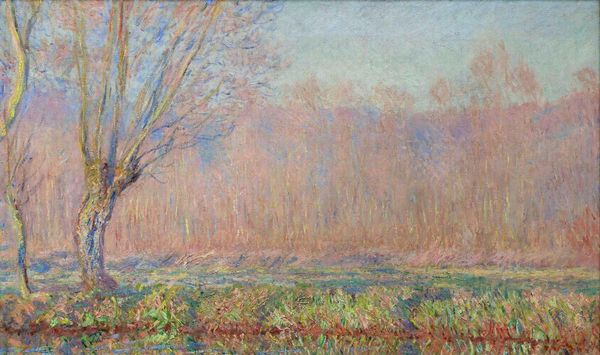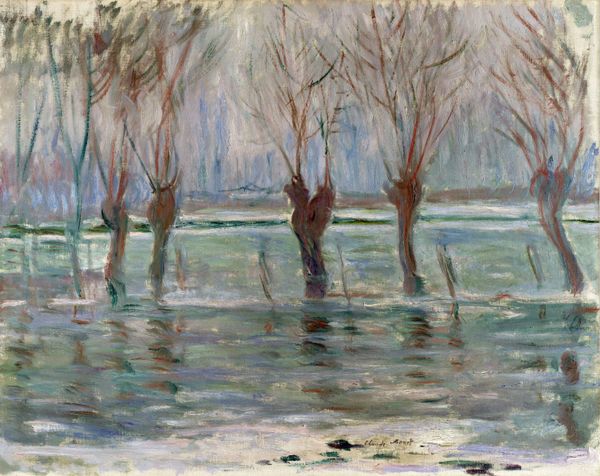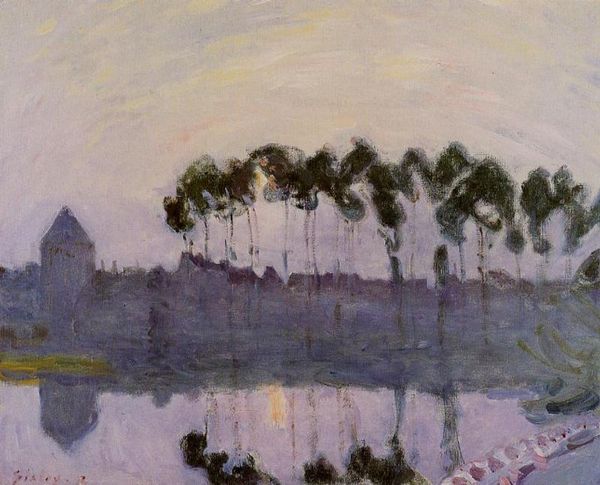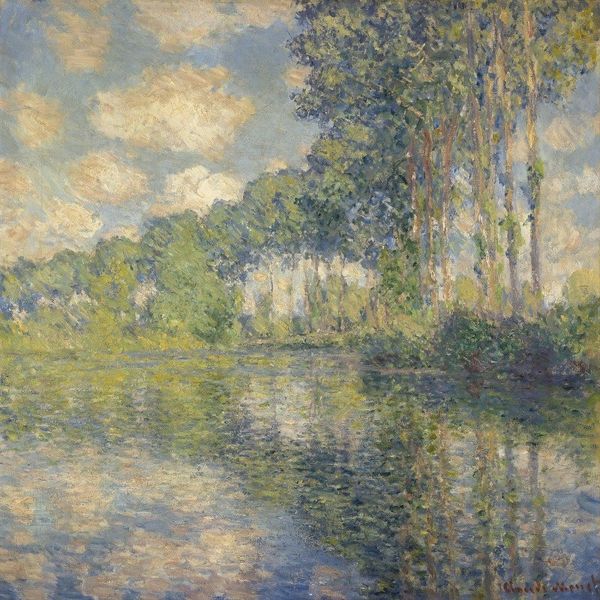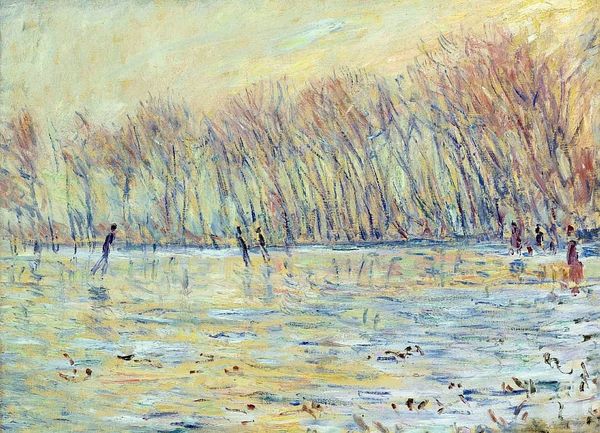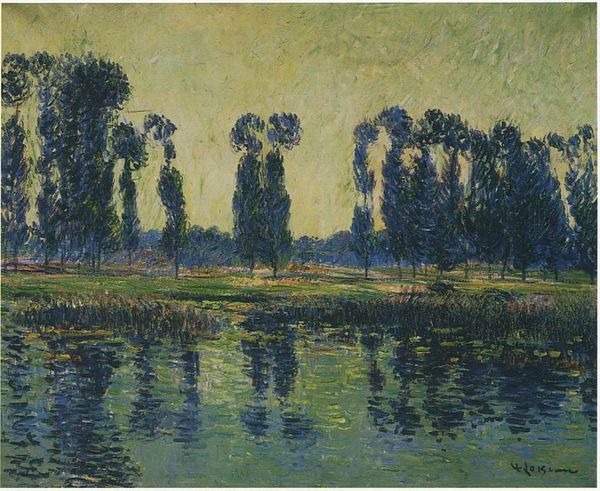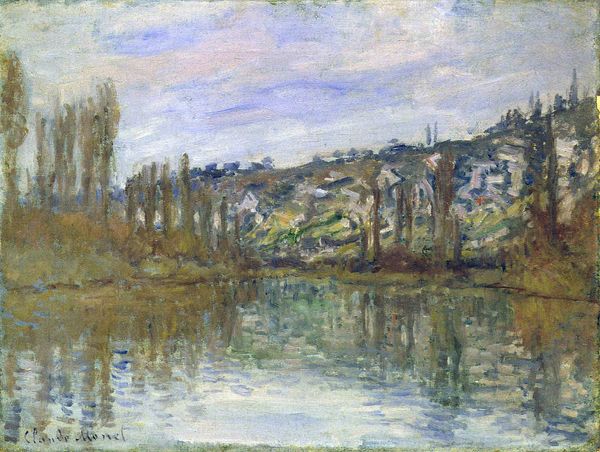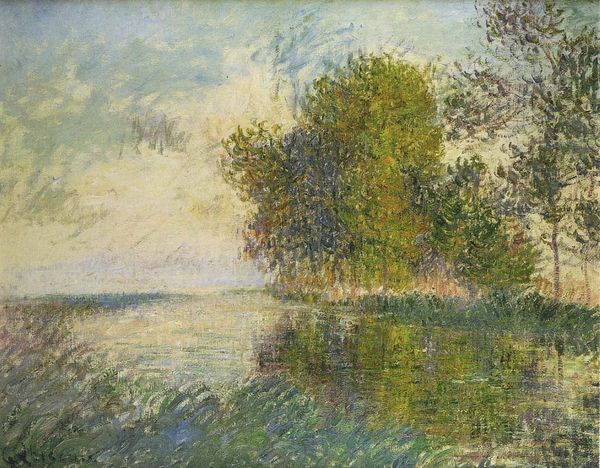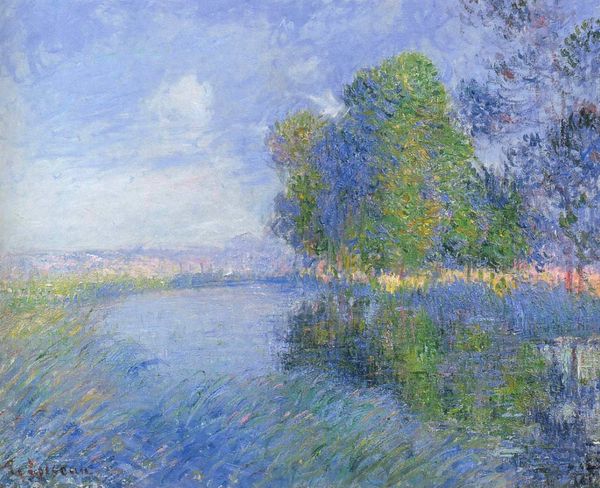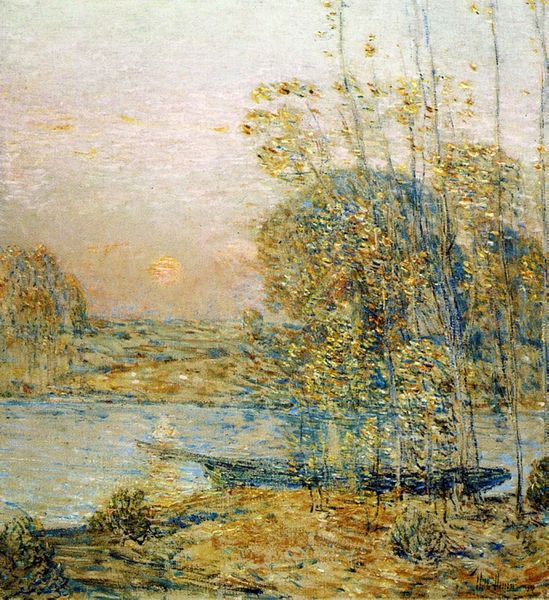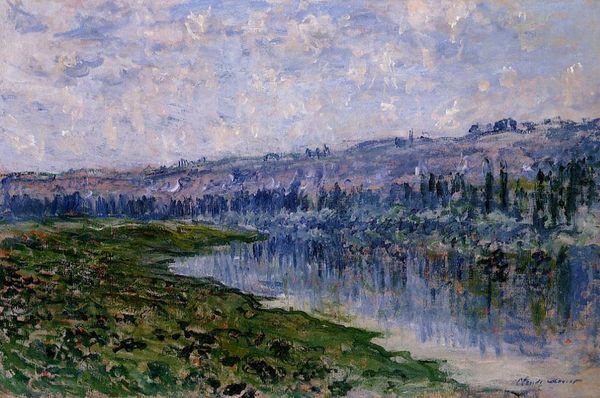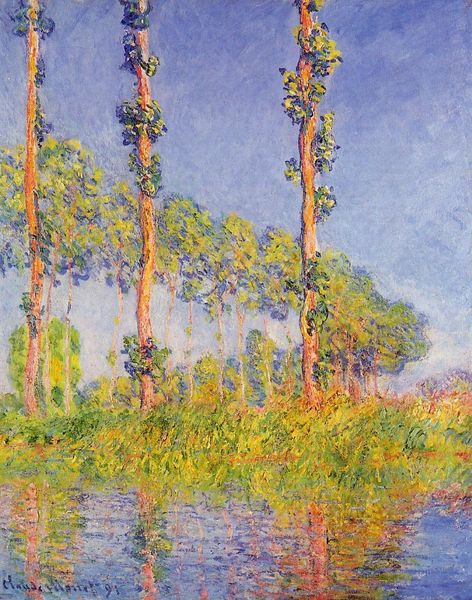
Copyright: Public Domain: Artvee
Editor: Here we have Alfred Sisley’s "On the Shores of Loing," an oil painting from 1896. It has such a muted, reflective quality to it. What catches your eye about it? Curator: Well, for me, it’s how Sisley grapples with the industrial labor lurking behind this idyllic scene. We see the 'plein air' technique, sure, suggesting an unmediated encounter with nature, but look at the manufactured pigments—the cobalt blues, the processed linseed oil holding it all together. Editor: So, it’s not quite the pure, natural landscape it appears to be? Curator: Exactly. Think about the societal conditions that made painting 'en plein air' possible. Who manufactured those paints? What kind of labor was involved? Where did Sisley buy the canvas, and at what cost? These commodities allow for Sisley's impression. Editor: That’s a compelling point. It is like he depends on them to execute this idea. So even this tranquil riverside scene is reliant on industrial production. Does knowing that alter your perception of the artwork? Curator: Absolutely. Instead of a romantic escape, it becomes a document of its time—a time when industrial processes were deeply embedded in everyday life and even the creation of art. Editor: It almost sounds like he's trying to hide or ignore it! Curator: I'm unsure he ignores this; on the contrary, by representing a landscape commodified and fabricated for the consumption of an emerging, bourgeoise middle-class art market, he reveals the material underpinnings of art in industrializing France. Editor: I see that now. Thank you. I won’t look at Impressionism the same way again. Curator: Good, this is art. Its material conditions reflect how landscapes are constructed, mediated and consumed within capitalist systems.
Comments
No comments
Be the first to comment and join the conversation on the ultimate creative platform.
